I can run my medical records through AI models all day long and get all sorts of recommendations for care…
Readers Write 3/7/11
Meaningful Use Does Not Have to Burden Physicians
By Evan Steele
As the CEO of an EHR technology company, I am driven by an unwavering dedication to physician productivity. As readers no doubt recall, the preliminary version of Meaningful Use generated an outcry from physicians — specialists in particular — regarding the burden they would have to shoulder to qualify for the government’s EHR incentives and the resulting effect on their productivity. Many physicians decided that they would not comply, and would simply forgo the incentives.
In response to significant lobbying efforts and to the more than 2,000 comments the government received last summer regarding the Proposed Rule on Meaningful Use, the Final Rule included considerable easing of the requirements for physicians in general, and significant accommodations for specialists in particular.
I want to share with HIStalk readers my view of Meaningful Use from a workflow perspective. The pie chart above illustrates how Meaningful Use is achievable without negatively impacting physician productivity, taking advantage of the exclusions available (to most specialists) and shifting the bulk of the burden away from the physician to the staff.
The implications of demonstrating Meaningful Use vary by specialty. For most specialists, the available exclusions make it relatively easy for a physician to comply. For primary care physicians, there is more to do to meet the requirements.
However, the pie chart illustrates how everyone can achieve Meaningful Use through a practical and efficient use of staff resources, combined with a productivity-focused EHR. This chart is for a typical orthopaedist, but similar charts for other specialties and primary care are also available.
The physician him/herself has four areas of responsibility. The act of ePrescribing alone addresses five of the Meaningful Use measures, and good ePrescribing software increases physician productivity. For example, we have documented that it takes to 23 seconds for a physician to prescribe on paper and a mere fraction of that time using our ePrescribing module.
Maintaining a problem list could be done by the nurse or MA, but we recommend that the physician at least review it, so he/she can view the clinical decision support alert at the point of care.
For some specialties, there are no (or few) relevant clinical quality measures, but where there are relevant measures, most of the work is done in the normal course of the visit: documenting the problem and ordering tests and/or medications.
As illustrated, the rest of the Meaningful Use measures can be handled by clinical and support staff, and some measures are excludable. So, with the right EHR and the right workflow, Meaningful Use is definitely achievable by specialists and primary care physicians alike.
Evan Steele is CEO of SRSsoft of Montvale, NJ.
Usability = Adoptability: What if Facebook and Amazon Built an EMR?
By Dale Sanders
Below are screen mock-ups based on Facebook’s and Amazon’s user interfaces. Borrowing ideas from them is comfortable because they parallel healthcare processes quite nicely, but also because the user interfaces on today’s EMRs are abominable, and adoption rates are terrible (without financial coercion) as a result. People flock to Facebook and Amazon by the millions, without financial incentives. Why? Because:
Total Value of Software Applications = Functional Value x Usability
If either Functional Value or Usability drop to zero, the overall value of the application drops to zero as well. EMRs might be functional, but they are not user friendly, so their Total Value to healthcare is very low.
In Facebook, we have a perfect framework for longitudinal documentation, collaboration, messaging, and scheduling between a patient and members of their entire care team, including family and friends. We also have a framework for easily integrating data from other sources to enhance the value to the patient’s healthcare — there’s no equivalent of HL7 interchange going on in Facebook. It references data located in other sources and systems. Can you imagine Facebook surviving if it required itself to house all the data that it presents? Facebook takes great advantage of referencing and pointing to data in the source systems to build rich content.
In Amazon, we have a perfect and familiar metaphor for ordering tests and procedures; tracking them; assessing their costs; rating them and seeing how other clinicians rated those orderables and referrals; and adjusting orders based on the behaviors and ratings of other clinicians, etc.
Here are the screen shots. Let’s start building these, eh? Think Mark Zuckerman or Jeff Bezos would help? 🙂
(Note: click the pictures to enlarge them).
Dale Sanders is CIO of the Cayman Islands National Health System. He writes about healthcare IT on his blog.


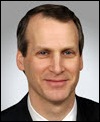
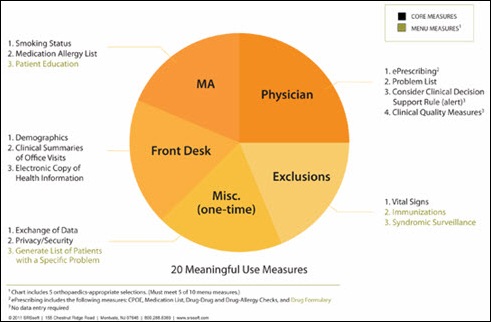
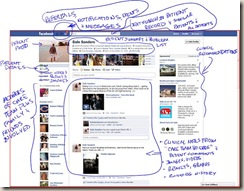
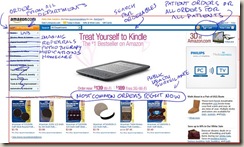
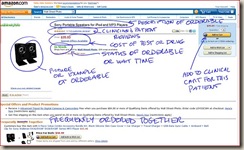
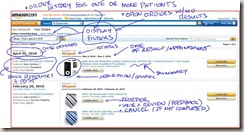
@ Dale Sanders
/Amazon Wishlist!
Dale, you crack me up.
Evan Steele makes a very good point. Break the problem into its key components, and assign the MU tasks to the staff best equiped to handle it. Give the most critical task to the docs…eprescribing.
I think that’s what the HITSP committee did when it allowed for scribes in the revised Stage 1 MU criteria.
The recent HIStalk Reader Survey didn’t seem to think a whole lot of Readers Write, but I’d say these two pieces argue for Mr. H’s “have been some nice posts that I would have missed reading” and Evan’s argues against provider-only posts. I’m glad these two pieces got in.
Evan – great workflow advice for all providers and implementation planners.
Dale – wanna start an EMR? Maybe we can call it Amabook.
“Can you imagine Facebook surviving if it required itself to house all the data that it presents? Facebook takes great advantage of referencing and pointing to data in the source systems to build rich content.”
Take that s step further. If I want to have my Facebook status updates on my own web page I don’t need to create an interface. I can use a nice SOAP or Rest API to embed the content on my web site in an hour. Facebook becomes the single source of truth.
When you add it all together this is perfectly suited to the healthcare sphere.
Loved seeing that post on your blog Dale. I have been working on something very similar for the last 6 months 🙂 Just about all clinical information required for 80% of cases can easily be on two screens especially when you have an intelligent feedback system. Taking “People who bought this product also bought” to “Patients with this diagnosis also may also need the following ordersets”.
Both are absolutely brilliant posts. A true definition of why “readers write” is a worthwhile part of HISTalk…
I believe that the points made in Mr. Steele’s comments bundled with the ingenuity of Dale’s dream-EMR combine to show that there are alternate paths to improving healthcare in America (enough with HITECH, ARRA, MUC, let’s call the goal by its true name) that do not require a complete re-vamping of the practice of medicine as performed by some of the smartest, most capably physicians in the world.
I am sure with the inclusion of Dr. Jayne it is only time before the established/entrenched organizations recognize that there are way too many ‘smart people in the room’ to continue to develop and market faulty products (both in design and in utility) without a significant backlash (more than just the 35% that are going to swap EMRs this year).
Keep up the inclusion of the insight from the outliers out there. I am consistently impressed with Evan Steele’s take on the industry, his honesty (coupled with the intoxicated(ing) honesty of Jon Bush) will push this industry to understand that ‘one size fits all’ is not a realistic or reasonable approach to HIT.
Dale, go build it. There is enough money in HIT from investors and VCs that your dream can become real. (did you see the sharks swimming @ HIMSS?) If the idea works, there is already a captive market.
My favorite comment on the current state of EMR is simple. What on your hard drive (C:\ for those that don’t navigate the computer all that much) was there 3 years ago? 5 years ago? Therefore, what can you expect to use in 18 months? Moving the healthcare industry to software solutions will mean a consistently changing environment where implementations are never actually finished and systems are in a constant state of being upgraded. Great (or even good) products will have shelf-lives that will surprise people and force innovation at every turn.
Google continues to innovate, we should too.
@Dale
Great mockups, if only our vendors would offer something that simple.
Evan,
Thanks for a wonderful, disruptively innovative (i.e., disruptive to the status quo) piece! Excellent ideas.
S.
#8 that should say “Dale.” Watch out when reading on small screens!
I’m getting to this a little late, but this was only recently pointed out to me. I created a full mock-up of CPOE in the style of the Amazon screen for a Dec 2010 Northern California HIMSS presentation on Clinical Decision Support. The presentation is in their online archive at
http://www.nocalhimss.org/smart05-bin/public/downloadlibrary?&itemid=45088540331718734723;
(Or http://goo.gl/DYqaC if that link gets mangled)
So clearly a lot of us are thinking this way and wondering why our EHR vendors can’t break out of their early 90’s primitive UI paradigm.